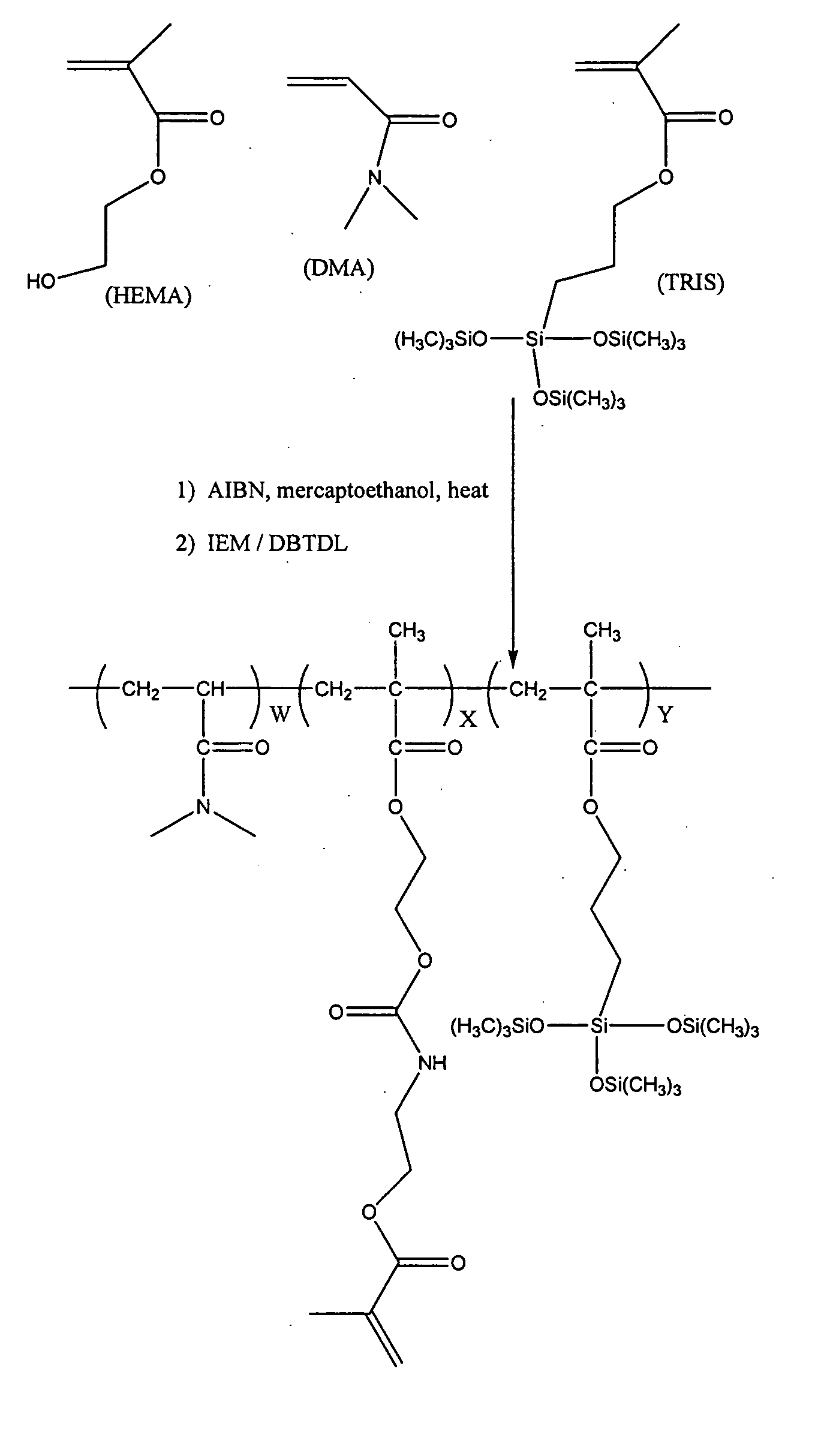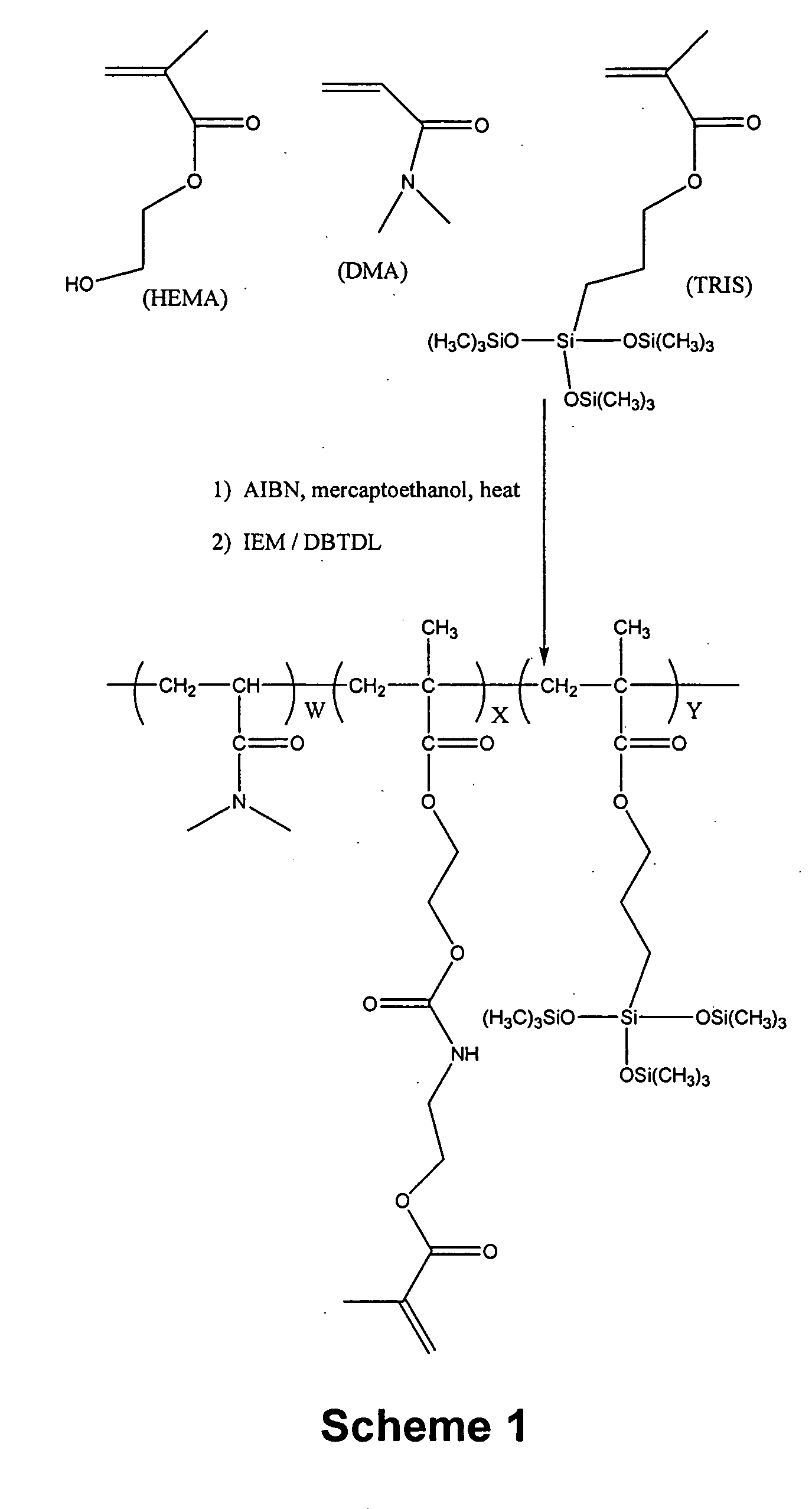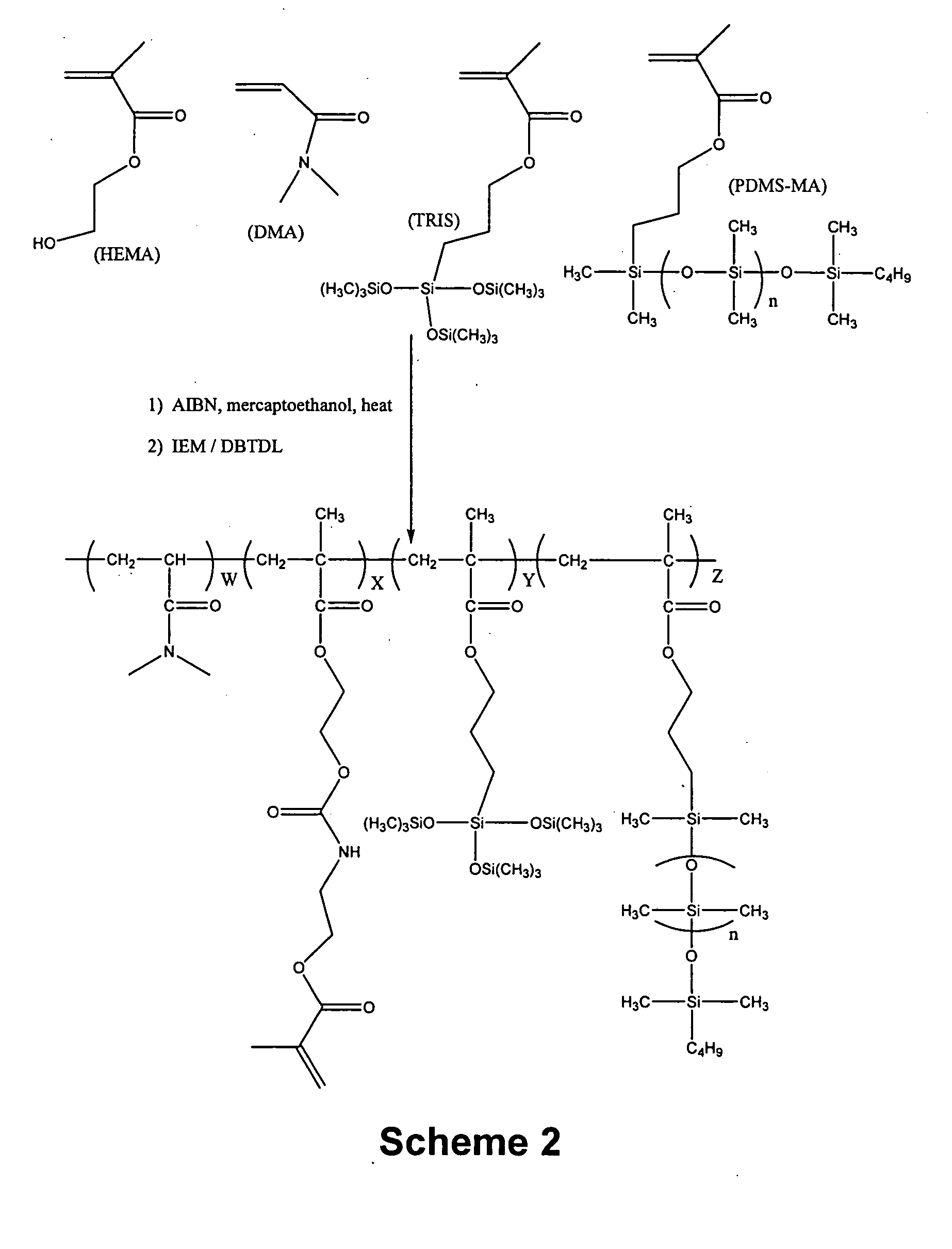Curable colored inks for making colored silicone hydrogel lenses
a technology of colored inks and silicone hydrogels, which is applied in the field of curable colored inks for making colored silicone hydrogel lenses, can solve the problems of non-silicone hydrogel lenses, adverse effects of silicone hydrogel lenses, and methods known
- Summary
- Abstract
- Description
- Claims
- Application Information
AI Technical Summary
Benefits of technology
Problems solved by technology
Method used
Image
Examples
example 1
[0122] This example describes synthesis of a precursor to a photo-curable binder polymer and synthesis of a photo-curable binder polymer.
Synthesis of a Silicone-Containing Polymer Having Pendant Functional Groups
[0123] A1: A 1 liter jacketed glass reaction kettle is charged with a solution consisting of VAZO-64 (0.6472 grams), DMA (106.09 g), TRIS (106.26 g), mercaptoethanol (0.253 g), HEMA (37.55 g) and ethylacetate (301.9 g). Nitrogen is bubbled through the mixture for about 15 minutes at room temperature and then the mixture is heated to 40° C. and stirred at about 200 RPM. After about 16 hours, the reaction mixture becomes noticably more viscous. The reaction is monitored by FT-IR analysis. After a total reaction time of about 20 hours, a solution consisting of 11 mg 4-hydroxy-TEMPO (4-Hydroxy-2,2,6,6-Tetramethylpiperidinyloxy, free radical) and 2.38 grams of ethylacetate is added to the reaction mixture. Gravimetric analysis of the reaction mixture indicates that the solutio...
example 2
[0131] This example illustrates that a binder polymer of the invention can be used as a prepolymer in a lens-forming material for making silicone hydrogel lenses.
[0132] Lens Preparation From Binder Polymer A2. To 25.06 grams of binder polymer A2 (as prepolymer, prepared in Example 1) solution is added 0.0142 grams of Irgacure 2959. The sample is mixed until homogeneous. Polypropylene molds (FreshLook) are filled with about 75 microliters of sample and irradiated with 1.8 mW / cm2 UV light (Grobel lamp) for 30 seconds. Clear hydrogel lenses are placed in BBS (Borate buffered Saline, FreshLook packaging solution) and autoclave sterilized. The water content of the lenses is about 25% by gravimetric analysis.
[0133] Lens Preparation From Binder Polymer B2. To about 13 grams of binder polymer B2 (as prepolymer, prepared in Example 1) solution is added Irgacure 2959 (0.00749 g) and 1 gram of ethylacetate. The sample is mixed until homogenous. Polypropylene lens (FreshLook) molds are filled...
example 3
Synthesis of Silicone-Containing Macromer
[0135] 51.5 g (50 mmol) of the perfluoropolyether Fomblin® ZDOL (from Ausimont S.p.A, Milan) having a mean molecular weight of 1030 g / mol and containing 1.96 meq / g of hydroxyl groups according to end-group titration is introduced into a three-neck flask together with 50 mg of dibutyltin dilaurate. The flask contents are evacuated to about 20 mbar with stirring and subsequently decompressed with argon. This operation is repeated twice. 22.2 g (0.1 mol) of freshly distilled isophorone diisocyanate kept under argon are subsequently added in a counterstream of argon. The temperature in the flask is kept below 30° C. by cooling with a waterbath. After stirring overnight at room temperature, the reaction is complete. Isocyanate titration gives an NCO content of 1.40 meq / g (theory: 1.35 meq / g).
[0136] 202 g of the α,ω-hydroxypropyl-terminated polydimethylsiloxane KF-6001 from Shin-Etsu having a mean molecular weight of 2000 g / mol (1.00 meq / g of hy...
PUM
| Property | Measurement | Unit |
|---|---|---|
| molecular weights | aaaaa | aaaaa |
| molecular weight | aaaaa | aaaaa |
| temperature | aaaaa | aaaaa |
Abstract
Description
Claims
Application Information
 Login to View More
Login to View More - R&D
- Intellectual Property
- Life Sciences
- Materials
- Tech Scout
- Unparalleled Data Quality
- Higher Quality Content
- 60% Fewer Hallucinations
Browse by: Latest US Patents, China's latest patents, Technical Efficacy Thesaurus, Application Domain, Technology Topic, Popular Technical Reports.
© 2025 PatSnap. All rights reserved.Legal|Privacy policy|Modern Slavery Act Transparency Statement|Sitemap|About US| Contact US: help@patsnap.com



